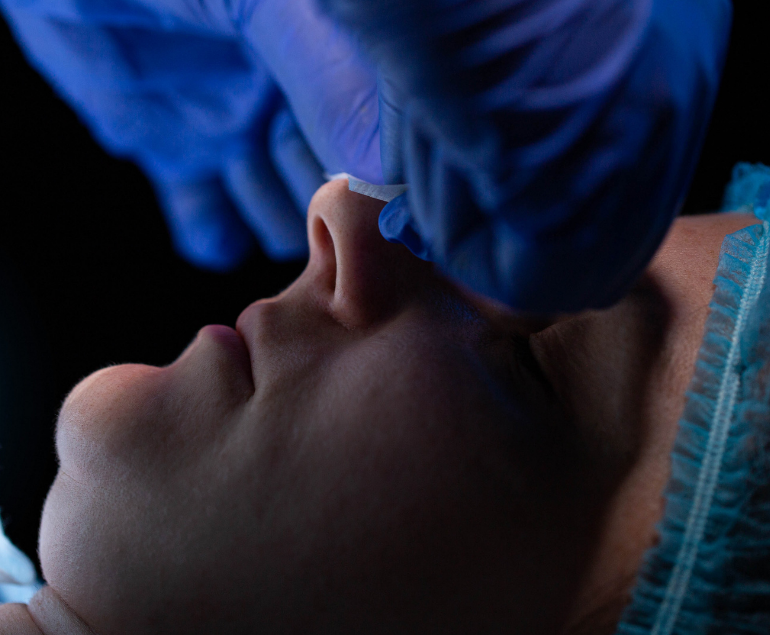
What is Nose Filler?
Nose filler is a cosmetic procedure used to correct the shape and appearance of the nose. The procedure is performed by experts using a filler substance injected into the nose. The filler material is used to correct imperfections, improve the shape of the nose, and increase nasal volume.
How is Nose Filler Applied?
Patients who decide to have nose filler undergo a detailed examination by a doctor. If the patient’s conditions are suitable for nose filler, the decision for the procedure is made after a thorough examination. Before the nose filler procedure, the patient and the doctor discuss and plan the treatment. The specific areas of concern on the patient’s nose are identified, and the areas where the filler will be applied are determined. Then, the expert doctor begins the nose filler procedure. Prior to the procedure, an anesthetic cream is applied to the treatment area. Once the numbness sets in, the antiseptic solution is used to clean the area. Hyaluronic Acid is commonly used as the filler material. The filler substance is injected under the skin in the targeted areas. After the procedure, redness and swelling may occur in the treated area, which is a normal and temporary condition. Patients can quickly return to their daily activities. Before and after photos of the nose are taken, and these photos are shown to the patient after the operation, indicating the success of the treatment more clearly.
Who is Suitable for Nose Filler Procedure?
The nose filler procedure is suitable for anyone who wants to correct the shape or appearance of their nose. It is commonly used to address various issues such as a droopy nasal tip, indentations on the nasal bridge, or irregularities in the nasal wings.
What is the Difference Between Nose Filler and Rhinoplasty?
Nose filler procedure does not require surgical intervention like rhinoplasty. It is performed using a filler substance, and patients can immediately return to their normal activities after the procedure. Rhinoplasty, on the other hand, involves surgical intervention on the nose and requires a longer recovery period.
**Please note that all the information provided in this content is based on online sources and should not be considered as professional advice. It is recommended to consult with your doctor for the most accurate and reliable information.

